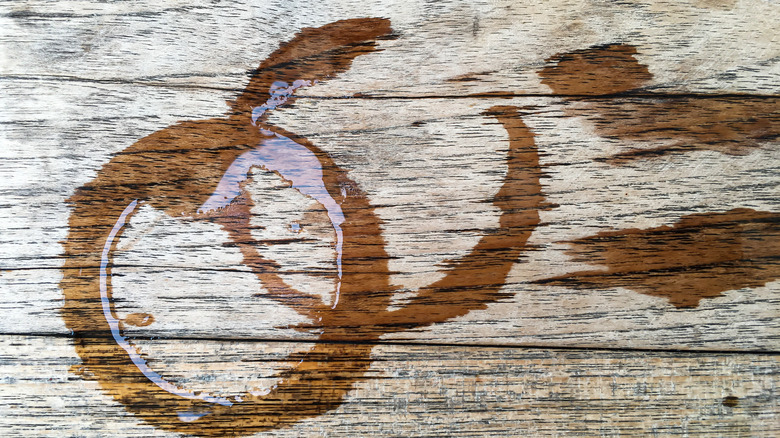Get Rid Of Stubborn Water Stains From Wood With An Unexpected Pantry Ingredient
Wooden furniture is often a staple in most homes as many functional pieces have wood components for structural or aesthetic purposes. With everyday use, wood furniture can develop water stains over time. One common reason is the absorption of moisture into the wood fibers, occurring when spills or condensation are left untreated. When water penetrates the finish and seeps into the wood, it can cause discoloration and create unsightly stains.
Additionally, changes in temperature and humidity levels can exacerbate this process, leading to further damage and deterioration of the wood. Using hot or cold items directly on the wood furniture without proper protection can also result in water rings or marks. Fortunately, all you need is a walnut to restore your wood furniture to pristine condition.
Using a walnut to remove water stains from wood furniture is an easy and affordable solution due to the natural oils present in the walnut. These oils act as a mild abrasive when rubbed onto the wood surface, helping to lift and dissolve the water stains. Additionally, the friction generated by rubbing the walnut creates heat, which can further aid in loosening the stain from the wood fibers. Furthermore, the oils from the walnut penetrate the wood, moisturizing and nourishing it, which can help restore its appearance and protect it from future damage. This simple method is effective for minor water stains and offers a natural alternative to harsh chemical cleaners, making it a great choice for maintaining the beauty of wood furniture.
How to remove water stains with a walnut
To remove water stains from wood furniture using a walnut, begin by inspecting the affected area. Ensure the wood is clean and free of any surface debris. Next, take a shelled walnut and gently rub it over the water stain in a circular motion. The natural oils present in the walnut will help lift the water stain from the wood surface. Continue rubbing the walnut over the stain, applying light pressure as needed.
As you work, you'll start to notice the water stain gradually fading away. Be patient and thorough in your approach, as it may take some time to completely remove the stain. Periodically check the progress of the stain removal by wiping away any excess residue with a clean cloth. This will also allow you to assess whether any additional treatment is necessary.
Once the water stain has been sufficiently lifted, buff the area with a clean, dry cloth to restore the wood's shine. Take care to blend the treated area with the surrounding wood to ensure a seamless finish. After completing the stain removal process, consider applying a layer of wood polish or furniture wax to protect the surface and enhance its appearance. This extra step can help prevent future water stains and keep your wood furniture looking its best. Finally, dispose of the used walnut and clean up any remaining residue from the surface of the wood furniture to reveal your revitalized piece.
Cautions for using this method
While using a walnut to remove water stains from wood furniture is a simple and effective method, there are some cautions to consider. It's important to ensure the walnut is clean and free from any debris or contaminants that could potentially scratch the wood surface. Inspect the walnut carefully before use to avoid inadvertently causing damage. Also, be sure to use a raw walnut rather than one that has been processed in any way as it may contain other substances that could stain or damage the wood.
Additionally, while the natural oils present in the walnut can help lift water stains, they may not be sufficient for deeply ingrained or stubborn stains. In such cases, repeated applications or alternative methods may be necessary, which could require more time and effort. Furthermore, using a walnut may not be suitable for all types of wood furniture. Some delicate or porous wood surfaces may be more susceptible to damage from abrasive materials like walnut shells. It's essential to test the method on a small, inconspicuous area first to ensure compatibility and avoid unintended consequences.
Moreover, while using walnut oil or other wood polish can provide similar benefits without the abrasiveness of walnut pieces, they may offer more consistent and predictable results for your pieces of furniture. These products are specifically formulated to nourish and protect wood surfaces, making them a safer and more reliable option for maintaining the appearance and integrity of your furniture.

